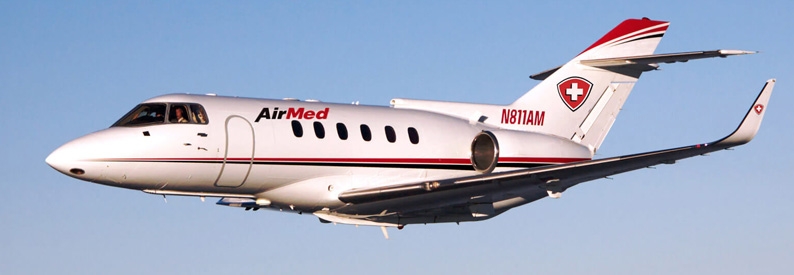Air Ambulance Services Market Technology, Recent Trends, Future Growth Analysis Forecasts 2027 | AMR, PHI Air Medical, Scandinavian Air Ambulance

Posted on September 21, 2021
Unless you’ve been living under the rock or in a cave, you would know that air ambulance services have become critical in the healthcare industry. While the technology is regarded as highly crucial and lifesaving, it’s still expensive, limiting its application in the private healthcare industry.
Nonetheless, given the increasingly aging global population (the number of people aged 65 or more expected to reach around 1.5 billion by 2050), the rise of chronic illnesses, multiple ailments, increased adoption of a sedentary lifestyle, and burgeoning middle class; are some of the factors that indicate a high growth potential of Air Ambulance services in coming years.
In this blog, we are sharing the recent trends, growth analysis, and forecasts of air ambulance services. So, let’s check out more details!
Growth Boosters
According to WHO, chronic illnesses are the primary reason behind global human demise as they account for 70% of the global death count. Similarly, around 80% of the deaths occur in low-income and middle-income countries, while medical researchers suggest that 47% of the American population will struggle with chronic health issues by 2026. In particular, 40% of deaths in America are caused by cardiac issues, and all these issues call for effective and reliable healthcare services.
That being said, the air ambulance has emerged as a quick response to healthcare or medical emergencies since the services are equipped with advanced equipment and professional medical experts. For instance, Air Ambulance Services can help patients suffering from cardiac issues, stroke, chronic pulmonary issues, and other chronic issues. Moreover, since the 1990s, global health spending has increased, leading to the development of modern healthcare technologies.
According to 2013 stats, global annual spending on healthcare was around $8.5 trillion, but it has increased to $20.28 by 2045. In addition, the highest healthcare expenditure is from the United States, while Eritrea has the lowest expenditure. For this reason, the emerging countries and their governments are spending large amounts on healthcare to improve the healthcare quality and medical infrastructures.
Market Limitations
When it comes down to the implementation and utilization of air ambulances, there are various market limitations, including operational restraints, higher costs, and accidents. All these factors can reduce the demand for services in the upcoming future. Not to forget, there is a need for extensive capital investments that will restrict the entry of new players into the global air ambulance industry.
Regional Status
To illustrate, North America has become the biggest market segment for air ambulance services, and the value was accounted to be $6.29 million in the year 2018. In addition, they are likely to procure an approximate CAGR of 2.08%. That being said, North America has the most number of air ambulance providers and has curated an infrastructure to make medical transportation more accessible for everyone. So, it’s evident that the air ambulance market in North America will expand, and government assistance and funds are helping as well.
Secondly, Europe is the next big market for air ambulance services, and it’s because of encouraging medical policies while the patient base is getting worsened by people struggling with heart attack, stroke, arthritis, osteoporosis, and obesity. Moreover, Asia Pacific will become one of the fastest-growing market segments for air ambulance (thanks to contributions from India, Japan, and China) in the upcoming years. In simpler words, these regions are flourishing when it comes down to new air ambulances.
Market Players
Some of the most prominent market players include Native American Air Ambulance, PHI Air Medical, Express Air Medical Transport, Babcock Scandinavian Air Ambulance, and Metro Aviation. In addition to these, Yorkshire Air Ambulance, Capital Air Ambulance, and REVA Air Ambulance are some other market players serving various market divisions, such as a vehicle, mission profile, and service type.
To begin with, the vehicles are ground-based and air-based. As for the service type, there are independent services, hospital services, government services, and community services. It’s predicted that independent divisions will have the biggest share in the global air ambulance industry since business partnerships between the community medical facilities and private companies keep increasing. Lastly, the mission profile includes inter-facility transit and medical scene response.
Some Additional Stats
- During the period 2019 and 2027, the air ambulances services will grow by a CAGR of 9.84%
- By the year 2027, this industry is likely to cross $9665.1 million
- Various driving factors (we have already mentioned them) will lead to the growth of the global air ambulance industry
Has COVID-19 Impacted The Growth Of Air Ambulance Services?
Last year, COVID-19 blanketed over the globe, and it has impacted the aviation, maritime, and defense industries like never before. There has been a reduction in aviation industry revenues, whereas the government’s primary focus has been to deliver financial assistance to the healthcare industry. This, for the time being, has dampened the growth of the Air Ambulance Services, but it’s likely to bounce back once the pandemic is over; hence we can expect a strong bounce-back of Air Ambulance Services in the coming years..